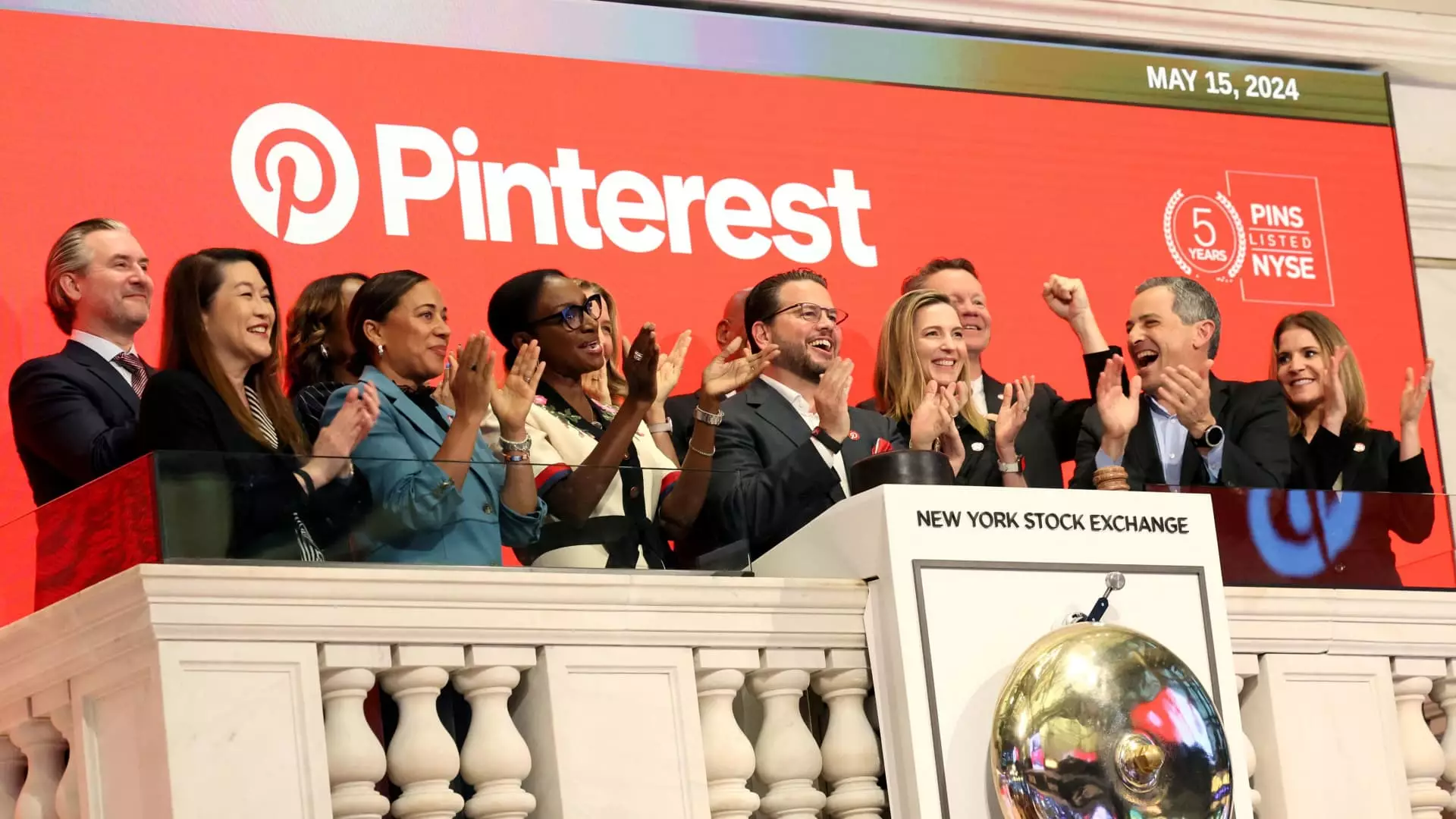In a week marked by mixed financial reports from various tech giants, Pinterest’s stock faced a significant setback, tumbling as much as 15% following the company’s earnings call on Thursday. Despite surpassing expectations in its third-quarter performance regarding revenue and earnings, a tepid forecast for the fourth quarter provoked unease among investors. This scenario illustrates a complex narrative behind the numbers that warrants closer inspection.
Pinterest disclosed its third-quarter revenue at $898 million, slightly exceeding the anticipated $896 million. Earnings per share adjusted to 40 cents also surpassed the expected 34 cents. Year-over-year, Pinterest achieved an impressive 18% sales increase from $763.2 million the previous year, along with a staggering 354% growth in net income, which equated to $30.56 million. On the surface, these figures paint a rosy picture; however, the forthcoming guidance for the fourth quarter cast a shadow over the impressive results.
The company projected fourth-quarter revenue to fall between $1.125 billion and $1.145 billion, with a midpoint of $1.135 billion — notably less than the analyst consensus of $1.143 billion. In the volatile realm of tech stocks, analysts’ expectations can significantly influence investor sentiment, and this scenario was no exception.
CFO Julia Donnelly highlighted ongoing struggles with advertisers in the food and beverage sector, a segment crucial to consumer packaged goods. She indicated that this sector’s decline contributes adversely to Pinterest’s broader revenue streams. Such specific weaknesses leave investors questioning the sustainability of user engagement and spending habits, hinting that traditional growth narratives might be faltering.
Donnelly’s comments about anticipated continued struggles into the fourth quarter painted a stark contrast against the upbeat revenue growth from prior quarters. The necessity for Pinterest to not just attract users but also vibrant engagement from advertisers reflects the intricate dynamics of digital marketing spaces today.
Amidst the turbulence, Pinterest’s Board initiated a $2 billion share buyback program, signaling confidence in the company’s long-term value. Typically, buybacks can be a powerful tool for boosting shareholder value when companies believe their stock is undervalued. However, in conjunction with underperforming ad revenues from essential sectors, such maneuvers can potentially elicit skepticism among shareholders regarding the reality of future growth.
Additionally, Pinterest reported increasing expenses, reaching $904 million, up 17% from $768 million a year ago. These rising costs, attributed to investments in research and development and the hiring of artificial intelligence experts, bring to light the balancing act the company must perform: investing in innovation while ensuring profitability amidst challenging market conditions.
The turbulence Pinterest is experiencing contrasts sharply with the recent buoyancy of other digital advertising players. Amazon, Meta, Alphabet, and Microsoft all reported robust growth in their ad businesses. This juxtaposition accentuates how differing business models and revenue streams can yield varied results, affected by market dynamics and consumer behavior.
While Meta and Amazon recorded significant annual growths, they too faced challenges, as seen with Meta’s decline in share value due to disappointing user metrics and guidance on rising infrastructure costs. Such discrepancies highlight the volatile nature of the advertising market, where both opportunity and setbacks can manifest rapidly.
Pinterest’s recent earnings report exemplifies the precarious balance that tech companies, particularly in the social media and advertising spaces, must navigate. The impressive growth numbers cannot overshadow the concerning guidance that reflects looming challenges within critical advertising sectors. As Pinterest embraces innovation through increased R&D spending, how effectively it can adapt to shifting market dynamics will be pivotal in restoring investor confidence.
Ultimately, stakeholders will be monitoring not only Pinterest’s financial adjustments in the upcoming quarters but also the broader trends influencing user engagement and advertiser confidence. In the rapidly-evolving digital landscape, resilience and adaptability are no longer optional; they are essential for survival and success.


Leave a Reply